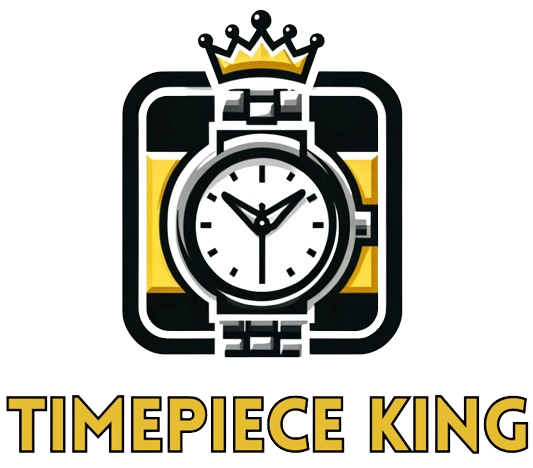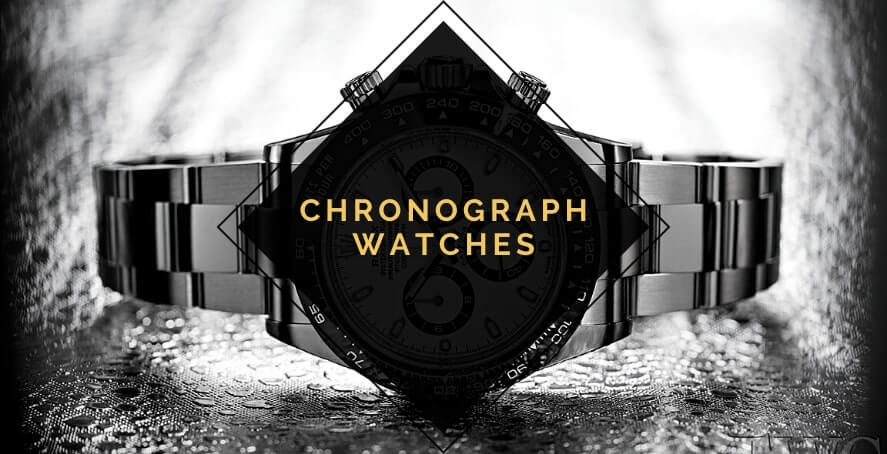The days when watches were merely responsible for telling what time it is are long gone.
During the history of watchmaking spanning over 3 centuries, we’ve never had so many different types of wristwatches to pick from as we have today.
The never-stopping technological advancement of the horological industry means we are now dealing with tens of watch types offering contrasting perks and functions.
One of the more popular and useful types of a timepiece is a chronograph.
While the purpose of the chronograph watch is clear for most aficionados, those just dipping their toes into the beautiful world of watchmaking might still need some introduction.
Hence, in today’s article, we will dive deep into all the chronograph watch features as well as touch on the subject of the history and the best chronograph watch models you might fancy owning.
What Is a Chronograph Watch? Definition
For starters, a chronograph watch is an instrument that can be used to measure elapsed time. The most common way for this purpose is through the use of subsidiary dials within the main dial.
What really makes these watches special is their ability to record time intervals with extreme accuracy.
They do so by coupling a separate mechanism with the normal way a watch ticks. In detail, a chronograph watch has a couple of buttons on the case that can be pressed in order to activate the chronograph timers.
These buttons activate the internal mechanism that starts, stops and resets the chronograph function to zero simultaneously with using it as a simple timepiece.
Another interesting fact is the widespread use of these watches by sportsmen and sportswomen. This is because of their ability to measure short time intervals during sporting events, which contributes to more accurate records and statistics for individuals and teams alike.
More than just a luxury item, chronograph watches were considered as instruments that could be found on the wrists of scientists, doctors and engineers as well – provided they went through the same rigorous testing and certification process as any other high-tech gadget.
How Does a Chronograph Watch Work?
There are two different types of chronographs: mechanical and quartz.
Mechanical ones have a special mechanism inside that’s activated by a series of gears once a button is pressed. This unique system is responsible for coupling the timekeeping mechanism with the additional mechanisms.
On the other hand, quartz chronographs are powered by batteries so there is no need to wind them manually or use any kind of kinetic energy for their operation. In both cases though, it all comes down to a system made up of different cylinders and gears that work in tandem with a center seconds hand.
Types of Chronograph Watches
We distinguish between three main types of chronograph timepieces.
-
Standard (or Simple) Chronograph
The most frequently used chronograph type is the standard chronograph, also known as the simple chronograph.
It’s seen in most watch models in the low-to-mid price region but you can also find it in top-end timepieces from brands such as Patek Philippe. This type of chronograph is controlled by either one or two pushers located next to the crown. The buttons allow the chronograph to start, stop, and reset.
-
Flyback Chronograph
The flyback chronograph is a high-tech chronograph that allows the timing function to be quickly restarted while the chronograph is still operating.
The chronograph will stop, reset to zero, and resume when the chronograph button is pressed. For split-second precision, this rapid return characteristic is frequently required.
-
Rattrapante Chronograph
The word “rattrapante” is understood either as “split seconds” or “catch up” in French.
In the world of watchmaking, it describes an extra complication installed in a chronograph. This type of chronograph features an extra second hand that is superimposed on the chronograph hand. Such a setting allows for the measurement of different events happening at the same time.
History of the Chronograph
The first chronograph watches were made by none other than the famous French watchmaker, Louis Moinet in 1816. They used a big main hand that was coupled with two small sub-dials on the inner side of the casing – one for measuring seconds and the other for minutes.
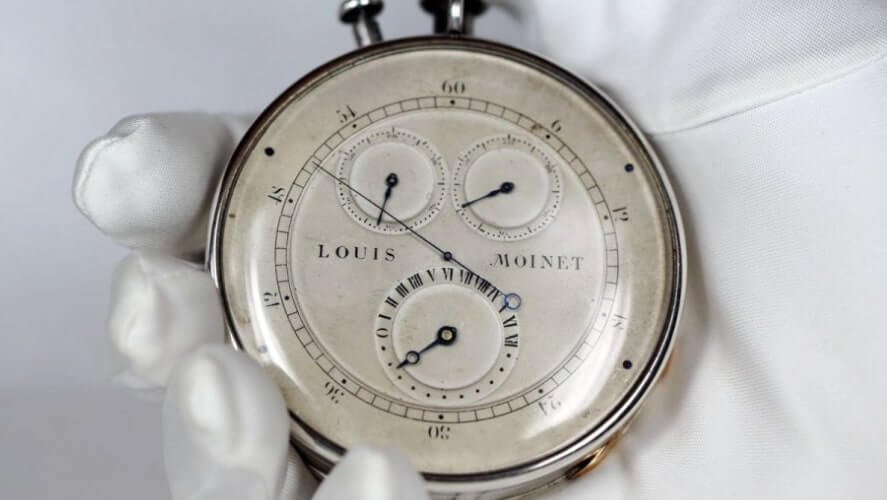
What’s worth noting, the name Chronograph is a combination deriving from two Greek words – “Chronos” (the embodiment of time) and “Graph” which means to write.
The debut chronograph was designed specifically for use in conjunction with astrological equipment. The ability to measure time accurately to 1/60th of a second was an outstanding feat at the time and, quite frankly, is still relatively impressive even today.
While Moinet’s invention is seen as the earliest modern-type chronograph, the first commercialized and widely-sold model was designed by another French watchmaker, Nicolas Mathieu Rieussec, in 1821. Rieussec was asked to design the watch for French King, Luis XVII, for the purpose of recording the lap time of horse races which he was a great fan of.

The chronograph assembled by Nicolas Rieussec boasted two faces. One included a small, inked needle whose movement was fuelled by the kinetic energy of the chronograph complication. Subsequently, on the second face, the said needle drew a circle that would be used to represent the amount of time that had passed.
As good as Rieussec’s invention was at that time, it couldn’t handle multiple uses because of its ink dependency. Some crucial developments were made to the Chronograph in 1844 by a Swiss horologist, Adolphe Nicole. He was behind adding the re-setting function which allowed the chronograph to perform consecutive measurements without ink.
Nicole’s betterment was one of the most crucial in the chronograph’s history. Shortly after his update, the watch was widely used across different fields, for example by the military to time artillery strikes. It also found great use in sports, especially running which is highly dependent on the chronograph feature to this day. It goes without saying that the world of athletics went through a true revolution because of the chronograph as it made athletes work that much harder to beat the records by the tiniest of margins.
For the biggest part of their history, chronographs were merely stopwatches, usually in the form of a pocket timepiece with a round metal case and less frequently encased in small wooden boxes. The introduction of the chronograph function to the regular wristwatch we all know and love today didn’t happen until the early 20th century.
Chronograph Integration in Wristwatches
It was the big guns of the industry that still rule the market today which contributed greatly to the integration of the chronograph feature into the wristwatch.
The brand responsible for coming up with one of if not the earliest chronograph wristwatches was Longines. In 1913, the Swiss watch mogul designed a timepiece that doubled as a timekeeping display watch. It was equipped with a stopwatch complication with accuracy to 1/5th of a second.
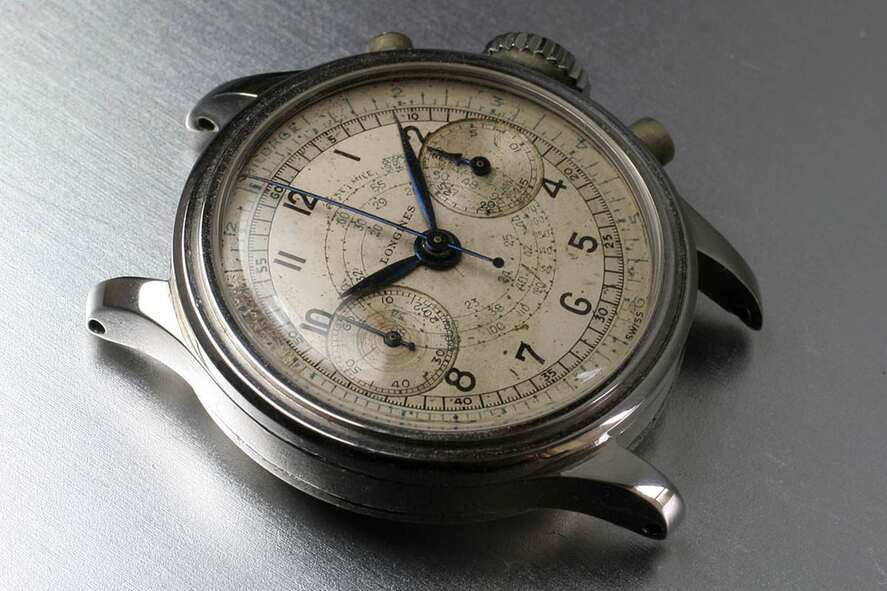
It didn’t take long for other powerhouses of the industry to come up with their own collections of chronograph watches.
Responsible for arguably the most notable release was Breitling. The British watchmaker designed a chronograph model with a separate pusher to operate the stopwatch feature.
A separate complication that further boosted the capabilities of chronograph watches was the introduction of a Tachymeter. Also developed in the early 20th century, a tachymeter scale is engraved on the bezel of a watch and allows you to measure speed based on travel time (or the other way round, calculating the distance based on speed). To perform the task, the wearer needs to be familiar with some mathematical equations and the time-measuring complication of the chronograph. The addition of Tachymeter boosted the popularity of chronograph models amongst people working in aviation and submarine navigation.
All the chronograph inventions discussed to this point were, of course, mechanical timepieces. The first automatic chronograph saw daylight only in the late 1960s.
Competing for the release of the debut chronograph powered by the kinetic movement of the wrist were all the big guns of the industry.
The first automatic model was the fruit of a close collaboration between four reputable watchmakers – Buren, Breitling, Heuer, and Hamilton. The brands’ efforts were further boosted by Dubois-Depraz, one of the highest-regarded movement experts.
The collaboration gave birth to an automatic movement known as Caliber 11, mostly referred to as “Chronomatic”. The movement powered iconic-to-this-day chronographs released in 1969 – Breitling Navitimer and Heuer Carrera.
Reasons to Use Chronograph Watches
There are numerous reasons why you should use a chronograph watch as your main timepiece.
1) Additional functions
As you already know, chronographs are endowed with extra features. For example, they can track two events at once like intervals between individual gym sets and the duration of the workout as a whole.
What’s more, there are chronographs with tachymeter or telemeter functions. The first type has the ability to measure speed while the second can track distance between a visual and an audible event.
Despite all of these intricate features, these clocks can nevertheless tell time reliably. It is a tribute to the chronograph’s quality and the primary reason why chronograph watches are more expensive.
2) Two-In-One
Chronographs are effectively two watches in one because they serve both as a regular timekeeper and a stopwatch at the same time.
In fact, a 2-in-1 is a bit of an understatement considering the fact that they can feature additional perks such as the aforementioned telemetres, tachymeters, or even pulsometers.
3) Great value for money
It’s worth noting that chronographs are manufactured at a higher rate, which decreases the cost but keeps the high level of craftsmanship. The increased intricacies powering these clocks, regardless of the number, make them naturally more costly. This makes the asking price reasonable.
4) Versatility
Another major benefit of using a chronograph watch is its appearance on your wrist. What makes these timepieces special is that they’re both sporty and elegant at the same time.
This singular quality ensures that you can wear them during sporting events as well as on more formal occasions like attending a wedding, an inauguration or any other social function.
Iconic Chronographs
Over the last few decades, there have been countless excellent chronograph releases but a few clearly stand out from the rest.
Unsurprisingly, the best models have been designed and manufactured by the top-shelf watchmakers you’ve probably heard about.
Let’s now have a look at the most iconic chronographs.
Rolex Cosmograph Daytona
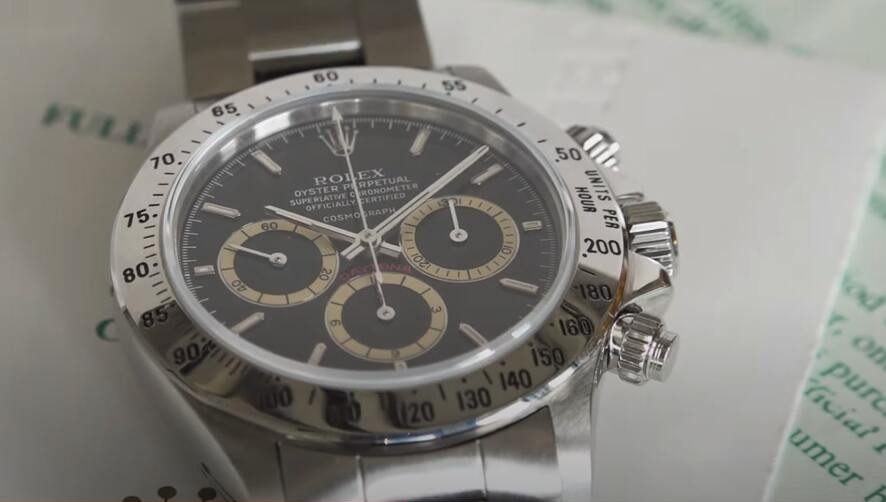
A list of the most iconic timepieces – whatever the type – wouldn’t feel quite right without a Rolex model. Chronographs are not an exception to the rule.
To this day, Rolex Cosmograph Daytona is seen as one of the must-haves when it comes to luxury chronograph timepieces.
Daytona Cosmograph was first released in 1963. It was nicknamed “Daytona” to pay tribute to the prestigious Daytona auto race of which Rolex had been an official timekeeper.
The exact model we include on the list is Ref. 16520, also known as Zenith Daytona, which is the first automatic Daytona ever released. Prior to Zenith, all Daytona chronographs were manually-wound. The mechanical models are still highly sought-after by collectors and aficionados but their prices have skyrocketed over the years.
Despite being released in 1988 and then discontinued in 2000, Zenith Daytona is still one of the most popular Rolex chronographs.
The Zenith Daytona starts at around $24,000, which is a significant sum of money. However, because it is such a major reference, it needs to be included on this list.

Breguet is another reputable brand that has a number of excellent chronographs to its name.
The Type XX Aeronavale ref. 3800ST is a modern chronograph that was first released in 1994. It takes inspiration from Type 20 pilot chronographs that were developed by Breguet and five other watchmakers at the request of the French military during the 1950s.
With that said, Type XX doesn’t really feel or look like a typical military watch. It’s designed in such a perfect way that it manages to keep some of its military roots but for the most part, feels like a true luxury chronograph.
The watch is made from stainless steel and has a 39mm case with a polished bezel and coin-edge fluting. The vintage-styled dial and syringe hands provide a lot of nostalgic charm while also providing a lot of readability.
The watch can still be found online at attractive price points ($5,500-$6,500).
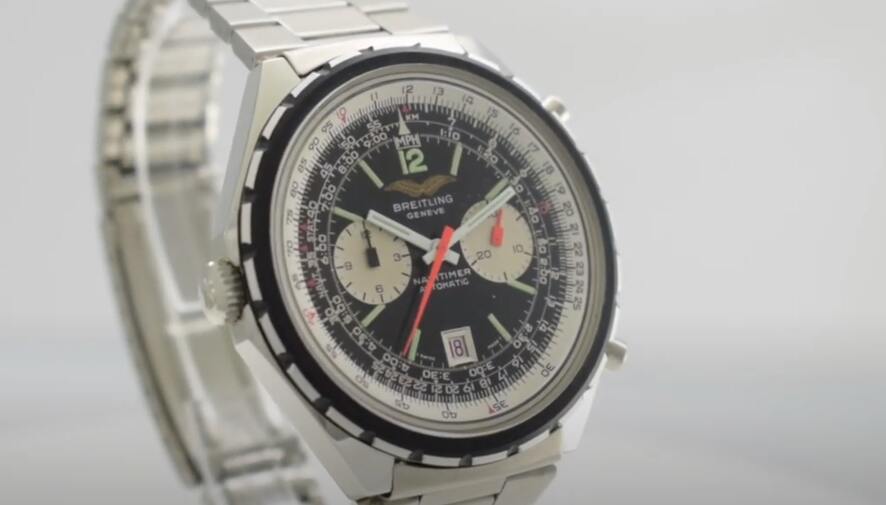
There was absolutely no chance we would leave the Navitimer out of this list, none whatsoever.
With Navi standing for “navigation” and time for “timer”, Breitling’s iconic chronograph is arguably the most famous pilot watch ever released.
The exact model we decided to include on the list is the Breitling Navitimer Chrono-Matic (ref. 1806), which, in our opinion, is one of the best entry-point chronographs produced to date.
The watch isn’t for those searching for something exquisite that fits well beneath their cuff. You will certainly turn many heads if you wear this watch.
The Navitimer Chrono-Matic ref. 1806 is a 48mm watch that combines all of the features of the Navitimer, which was first launched in 1954, with the convenience of the automated Calibre 11 movement developed in the late 1970s. Breitling’s Navitimer Chrono-Matic ref. 1806 was the company’s first self-winding Navitimer. The classic six-sided case known as the “pizza” case or the “fried egg” is featured.
Omega Speedmaster Professional

There are quite a few Speedmasters that are in the mix for the most iconic chronograph model by Omega.
Over the last few years, many of the vintage references have seen a massive increase in prices, particularly those running on the powerhouse of a caliber 321. At the time of writing Speedmaster Ref. 145.022 seems to be the best option to go for a few reasons.
One of the main ones, without a doubt, is the pricing. This excellent Speedmaster is still possible to find for around $4,500 and the cost of models kept in great shape is unlikely to break the 5-figure barrier either.
Also, this model played a massive part in the legendary Apollo program. NASA astronaut Ron Evans wore this particular reference during the Apollo 17 mission that was so, so close to the moon. There are so many more reasons why this is such a great addition to any collection but just the fact that it’s a Speedmaster “Moonwatch” should tell you all you need to know.
Zenith El Primero A384

Last but not least, well worthy of a place on the list of the most iconic chronographs is this beast of a timepiece by Zenith.
Even to this date, the El Primero chronograph movement takes some beating. The caliber was first introduced in 1969 and it’s the engine in three iconic models – A384, A386, and A385.
It was one of the first chronograph automatic movements so it’s highly appreciated by aficionados. The A384 model is probably the most unique from the holy trio of Zenith chronographs, due to its tonneau-shaped case and the so-called panda dial.
It’s without one of the all-time faves for many, especially when we add the amazing ladder bracelet. The best option, however, is the contemporary El Primero A384 Revival, which is part of the current Zenith line, rather than a vintage version. It’s also considerably cheaper as you can find the revived models online for as low as $6,000.
What Is a Chronograph: FAQ
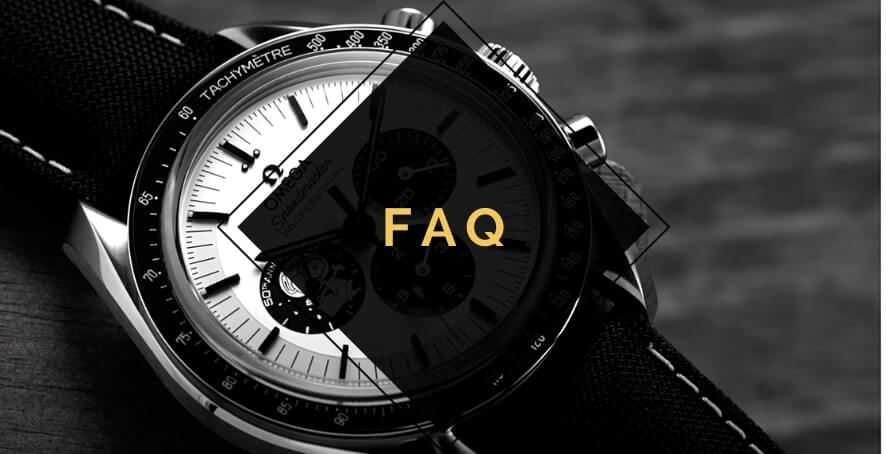
As you’ve already learned, chronograph watches are more than just simple time-tellers. They’re one of the more complex types of watches that can be extremely useful in a variety of situations.
What Is a Flyback Chronograph?
A flyback chronograph is a watch with quite a unique complication. It offers a reset mechanism that may be used without first stopping the chronograph. In traditional chronographs, the wearer must stop, reset, and restart the chronograph first in order to measure a new event.
What Are the 3 Dials on a Chronograph Watch?
Browsing through different chronograph models, you must have noticed that the vast majority of them come with three additional sub-dials.
Okay, but what are the dials on a chronograph watch for?
All are used to help you register the elapsed time. In other words, they record the length of time the stopwatch is running for. Usually, they measure seconds, minutes, and hours.
What Is a Quartz Chronograph Movement?
Nowadays, a lion’s share of newly-released chronograph models uses quartz movements.
In other words, these watches are battery-powered. Quartz chronograph watches are known for their unbeatable accuracy (+/- 15 seconds/monthly) but they need a battery replacement every 1-3 years, depending on the watch model.
What Is an Automatic Chronograph Watch?
Unlike quartz models, automatic chronographs don’t need a battery to run. Instead, they feed off the kinetic movement of the wearer’s wrist.
In general, automatic watches (including chronographs) are the desired type amongst most aficionados due to the higher craftsmanship skill required to assemble them. The movements are more complex but also more pricey. With that said, most can’t compete with chronograph counterparts in terms of accuracy levels.
What Is Swiss Chronograph Movement?
Watches advertised as Swiss chronographs come with Swiss-made complications – whether quartz, automatic or mechanical.
For a watch to be labeled Swiss, it must achieve a minimum 60 percent Swiss value criterion. The use of a Swiss movement, casing-up, and having a final examination in Switzerland, are a few of the requirements.
What Is a Chronograph Digital Watch?
It’s a watch with a digital display that includes a stopwatch function. A good example of a chronograph digital watch is basically any model you can pick from the world-renowned Casio G-Shock collection.
A digital display, as opposed to hands pointing to markers as in a regular chronograph timepiece, provides information in the form of digital characters.
What Is a Solar Chronograph Watch?
A solar chronograph is a timepiece that’s powered by exposure to light.
This type of timepiece rarely requires a battery replacement and sometimes can reach more than a decade if exposed to light regularly. Solar chronograph watches use quartz movements and can be a bit more expensive.
Popular and trusted watchmakers offering solar-powered chronograph models include Seiko and Citizen.
What Is a Column-Wheel Chronograph Watch?
Next to the coulisse lever chronograph movement, a column wheel complication is the most prevalent type of chronograph mechanism today.
In this chronograph type, a device that resembles a miniature castle turret turns one increment with each click of the chronograph pusher. To activate the functions, a mechanical finger is inserted between the teeth of the column wheel. The smooth and rapid reaction of the column wheel movement necessitates accuracy in design and construction, and the outcome is evident to the user in the smooth and quick response, which is generally obvious from observation.
Because of how smoothly these watches perform, they are the most desired type among collectors. More often than not, they’re also quite pricey.
What Is a Split Second Chronograph?
This is not a watch type but one of the chronograph functions.
As nicely explained on HauteHorlogerie:
“…the split-seconds chronograph is used to time different events that begin but do not end together. When set, the hand of the chronograph and the hand of the split-seconds button when the first event ends. After reading the intermediate time a second push on the button makes it catch up with the first hand and the two continue their movement together.”
What Is a Panda Dial Watch?
The name “Panda” is commonly used with chronograph watches that boast dials with white backgrounds and dark-toned (or black) chronograph sub-dials.
There’s also the “Reverse Panda” type that features a black dial theme with white chronograph elements.
What Is a Rattrapante Chronograph Watch?
A Rattrapante chronograph is one of the more pricey chronograph complications out there.
But what does rattrapante mean? The word derives from French, meaning “catch up”.
The movement features an extra second hand for the chronograph function which is overlapping the standard second hand. Watches with the rattrapante complication also feature an additional pusher, normally located at 2 o’clock.
When you depress the pusher (as you would in order to start a regular chronograph), the second hands synchronize their rotations around the perimeter of the dial. The additional second hand comes to a halt when the extra pusher is pressed. When you press the third pusher, the halted seconds hand catches up to the other seconds hand, which is still going. This allows the wearer to record numerous time periods that begin and finish at the same time, e.g. numerous lap times in a race.
What Is Calibre 16 Movement?
A watch powered by Calibre 16 is likely to be one of the most refined chronograph models you can come across.
Also known as ETA 7750 movement, it’s easily one of if not the most successful automatic chronograph complications ever released. The caliber was produced by TAG Heuer in the early 1970s and to this day is present in many top-end chronograph watches from brands such as Hublot, Panerai, IWC and, naturally, TAG Heuer.
Watches with Calibre 16 movement are COSC-certified.
What Speedmaster Should I Buy?
The Speedmaster line by Omega is easily one of the most sought-after chronographs out there.
So, what Omega Speedmaster to buy?
In our opinion, the best dollar-for-dollar Speedmaster you can get is the Ref. 145.022 model listed in the Iconic Chronographs section.
There are two main reasons behind our decision:
- the still-affordable pricing (you can find this watch for $4,500-$5,000)
- the fact it was part of the famous Apollo mission
FratelloWatches wrote a great piece that can provide more food for thought regarding your Speedmaster purchase.
What Is an Omega Speedmaster Reduced?
“Speedmaster Reduced” is a popular name for Omega Speedmaster models that aren’t equipped with a date display window. They bear a great resemblance to the original Omega Moonwatch. On the other hand, Speedmasters that do have a date window are known as “Speedmaster Date”.
Is Timex Chronograph Reliable?
Timex is one of the well-known American watchmakers that offers hundreds of timepieces at more-than-affordable price points.
It also has many chronograph models to its name. Hence, many people shopping on a budget are interested in whether these watches are reliable.
In a word, yes.
Timex is a world-renowned albeit budget watchmaker that utilizes ultra-reliable Japanese quartz movements in its chronograph collection. They’re accurate and pretty long-lasting.
